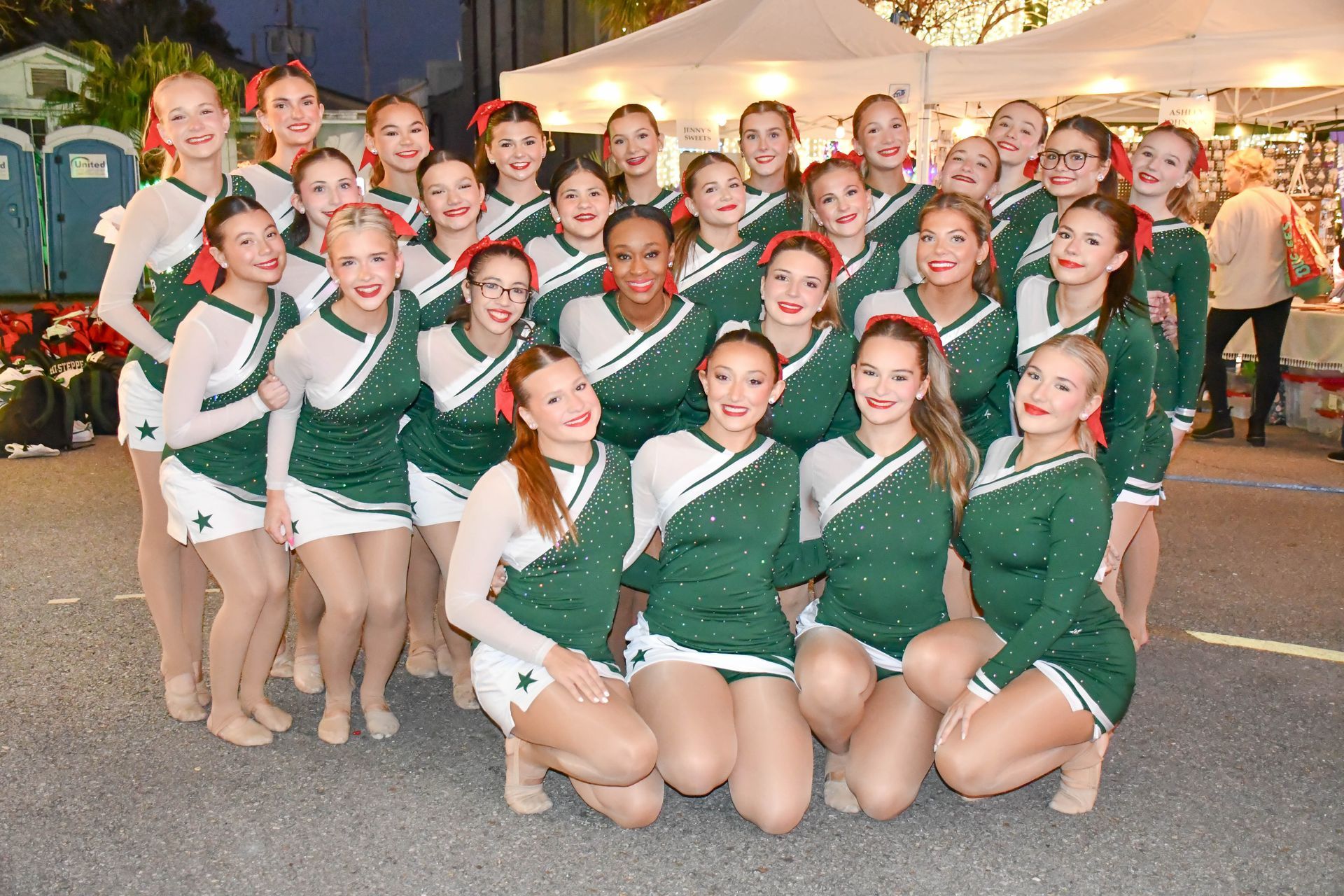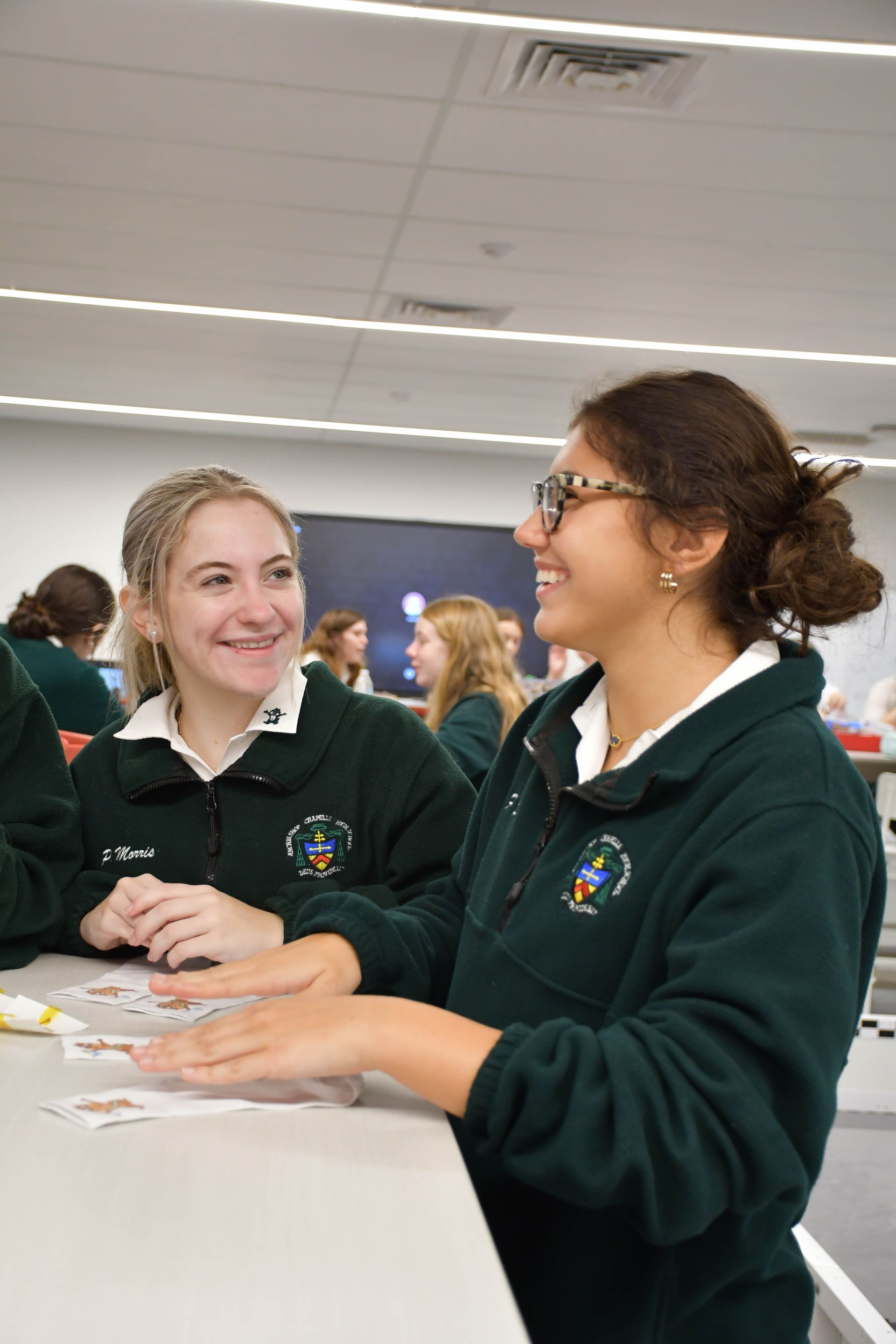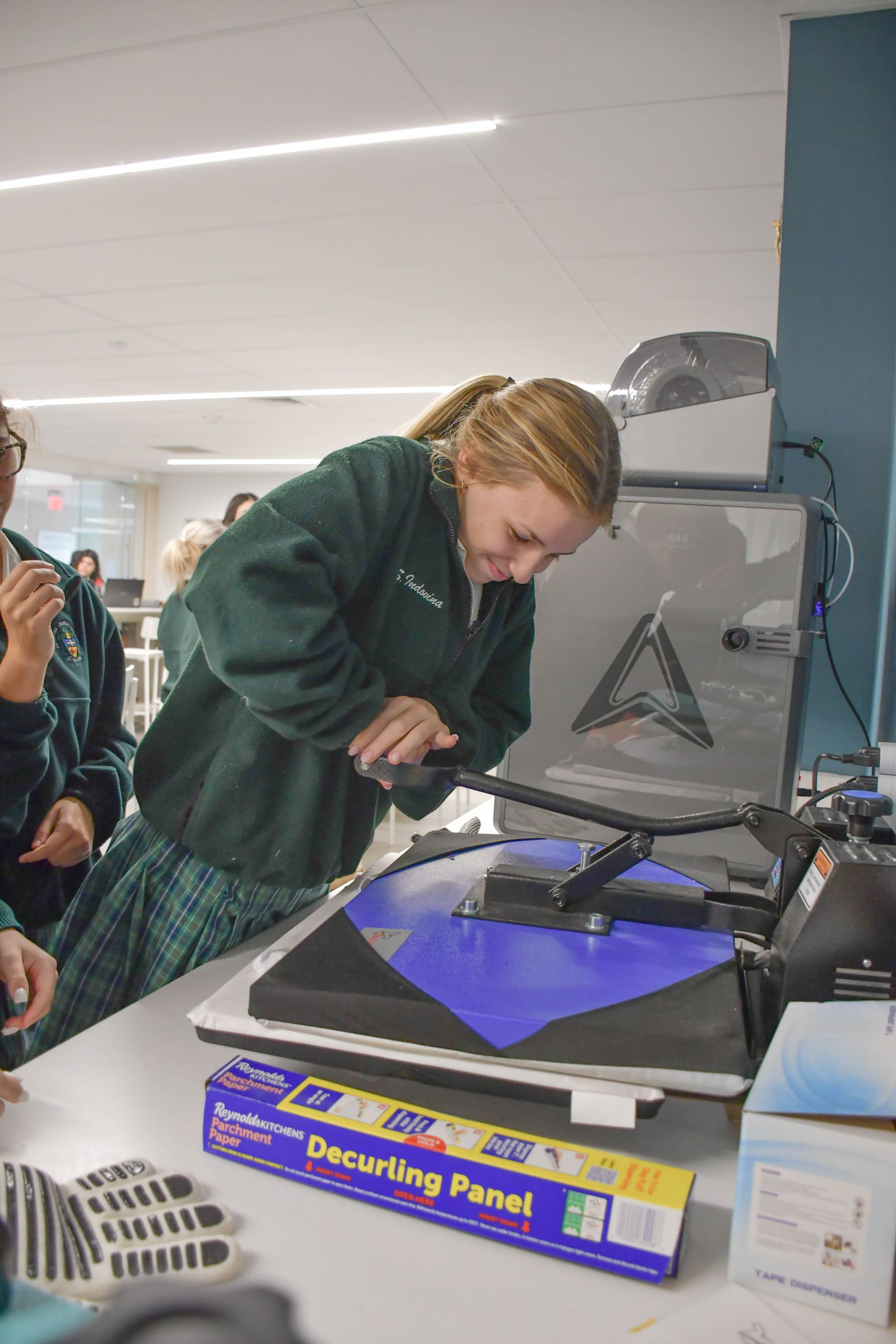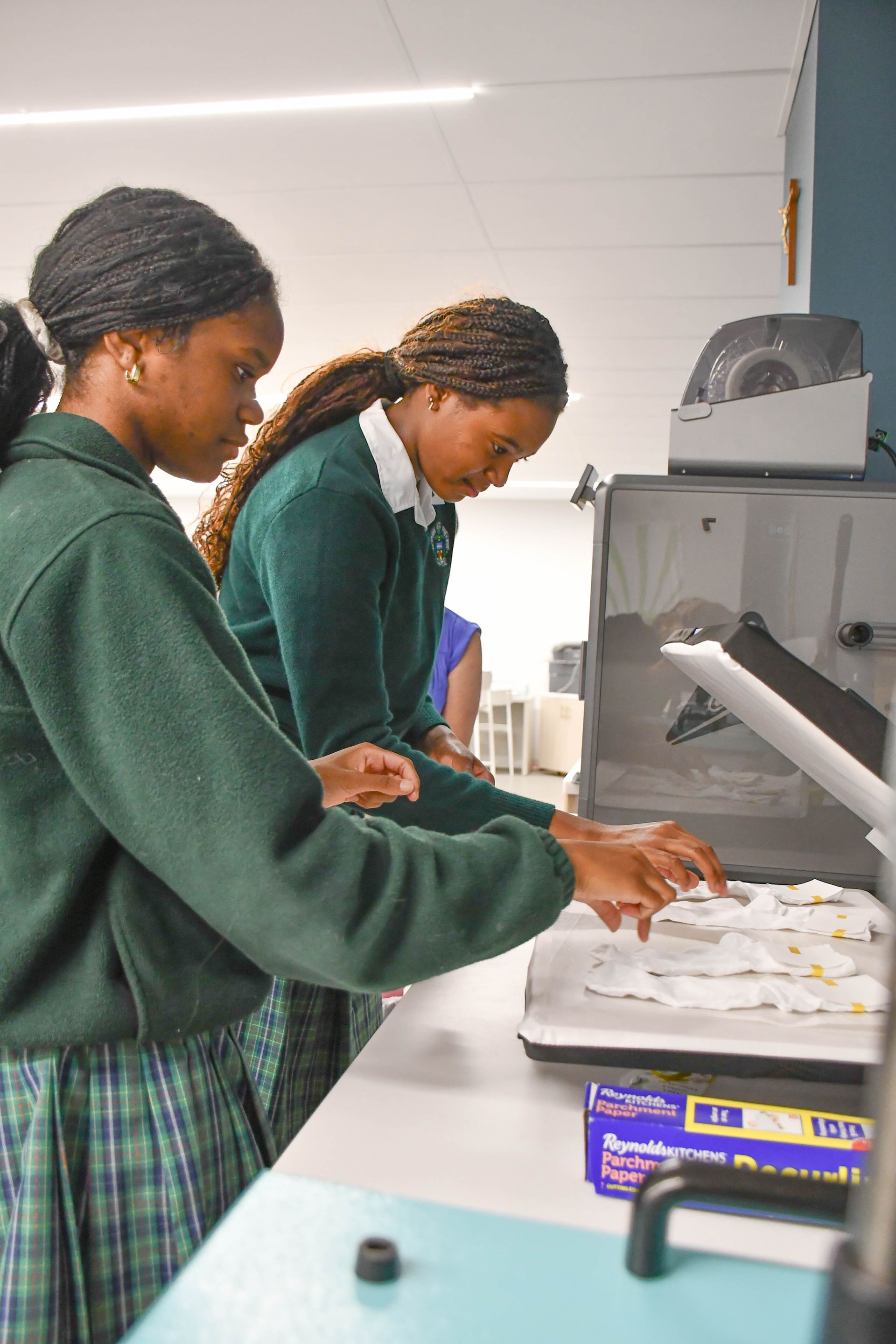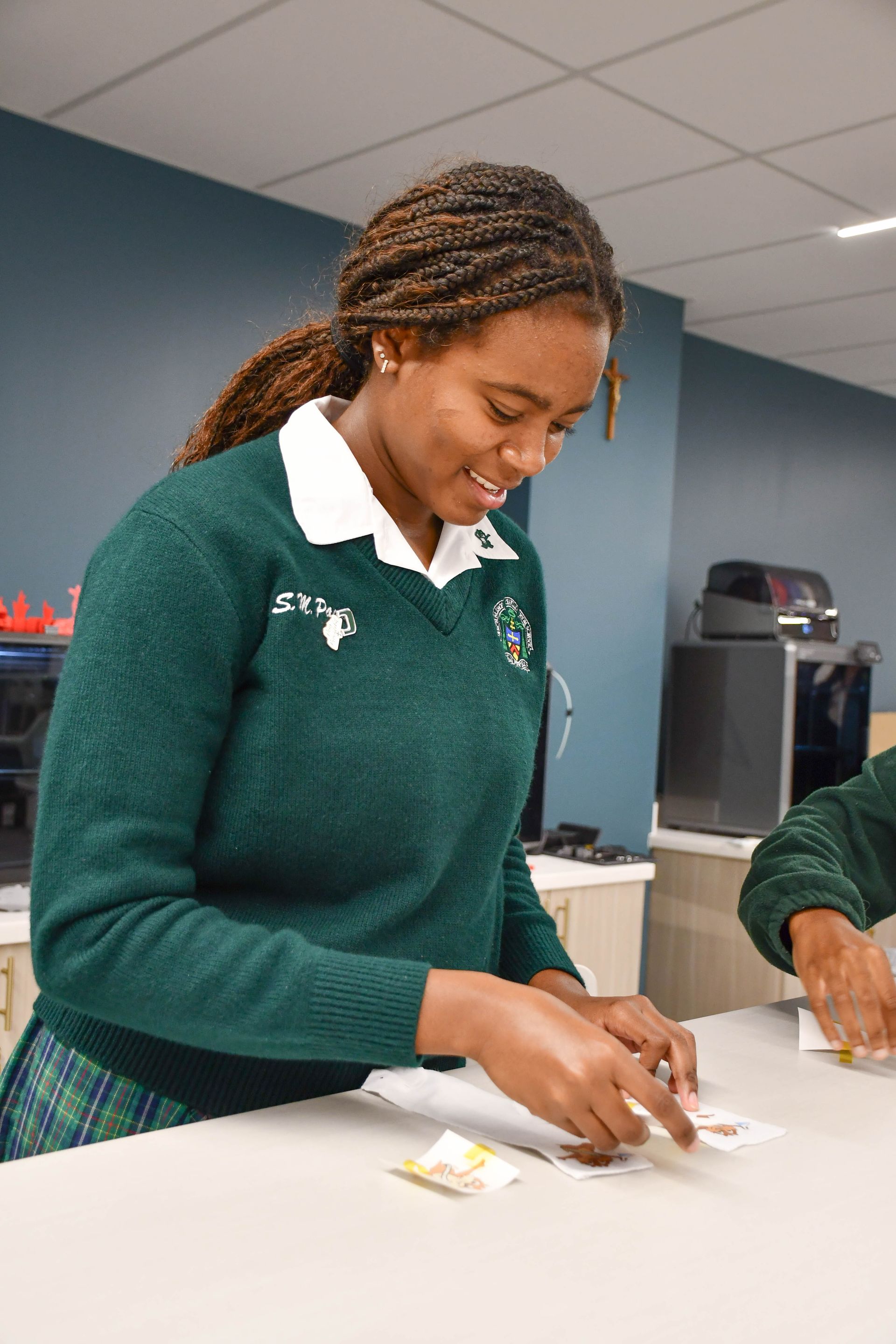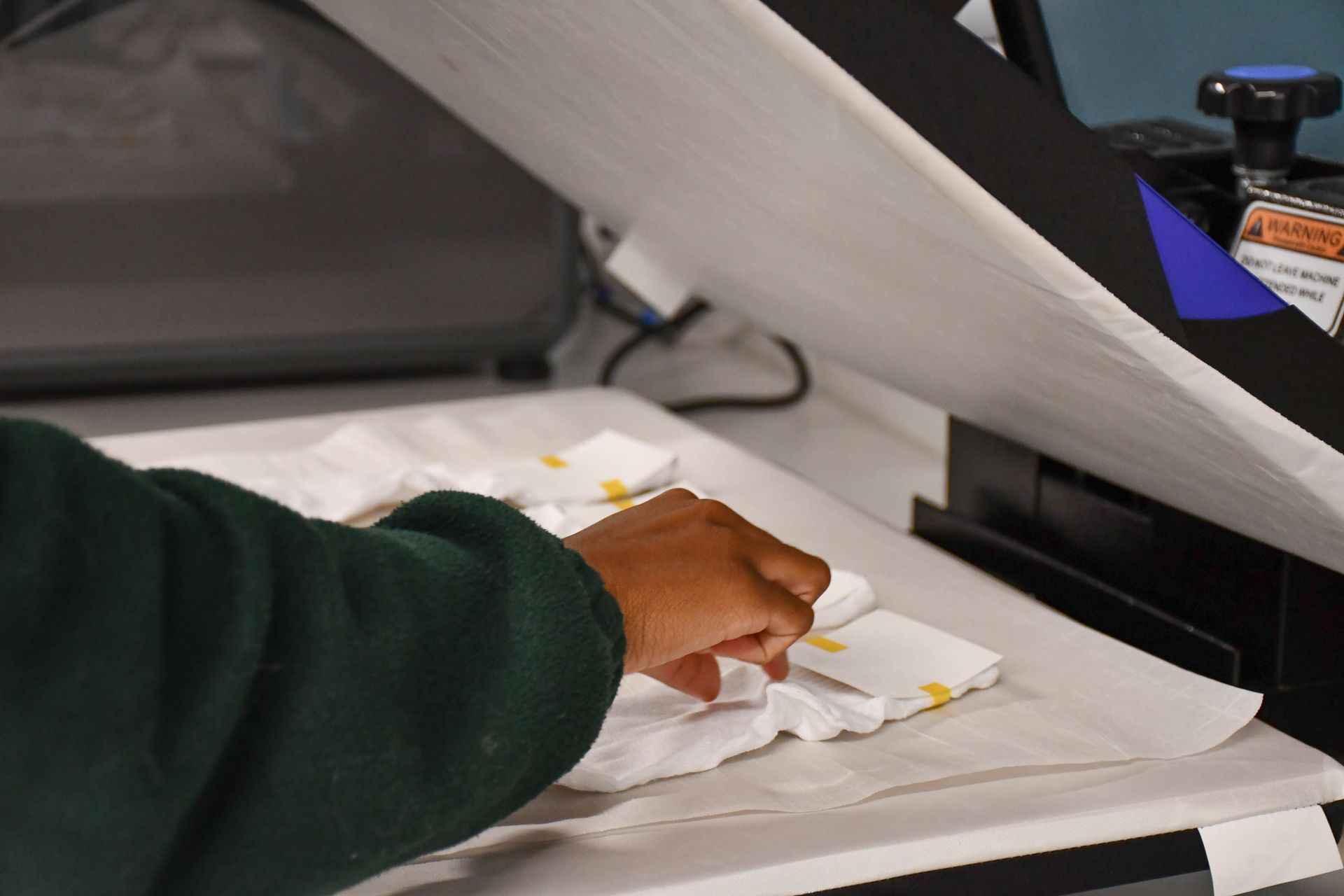PUBLISHED ON September 17, 2025
Chemistry Meets Creativity: Sublimation Printing in Action!
Mrs. Pickett and Mrs. Homes’ Chemistry classes recently combined science and creativity in an exciting sublimation printing assignment! Using tools in our St. Joan of Arc Center, students applied their knowledge of chemistry to create custom Chippy socks. This hands-on activity brought the principles of sublimation to life in a fun and memorable way!
How Does Sublimation Work?
Sublimation is a fascinating process where a solid turns directly into a gas without passing through the liquid phase. Here’s how it happens:
Energy Boost: The molecules of a solid gain enough energy—usually from heat or reduced pressure—to overcome the forces keeping them in a solid state.
Escape to Gas: The energized molecules transition directly into the gas phase.
What Is Sublimation Printing?
Sublimation printing uses heat and pressure to transfer dye onto materials like polyester fabrics, ceramics, or metals. The process relies on sublimation, where a solid dye turns into gas and bonds with the material, creating vibrant and durable designs.
Why Is Sublimation Printing Popular?
- Durability: The ink becomes part of the material, ensuring long-lasting designs.
- Vibrant Colors: The process produces high-resolution, full-color prints.
- Smooth Surface: No raised ink—just a smooth finish.
- Eco-Friendly: Minimal waste compared to traditional printing methods.
Science + Creativity = Fun!
Students explored the molecular changes that occur during the process while creating something they could wear and enjoy.
From the lab to wearable art, the Chippy socks turned out amazing! This activity is just one example of how Chapelle combines STEM and creativity to make learning engaging and meaningful.
Great job to all the students in Mrs. Pickett and Mrs. Homes’ classes for mastering the science of sublimation and showing off their creative skills!
Recommended Posts


